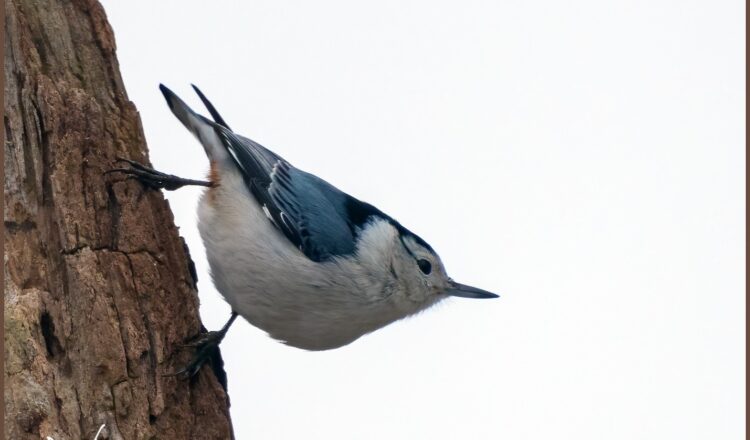By Dan Jordan, Jordan Photography and Consulting
If you’ve never witnessed the antics of a nuthatch, you’ve missed out on some real birding entertainment. I like to refer to nuthatches as the “nut-jobs” of the bird world. They spend most of their lives upside down (for good reason, as it turns out). They run up and down branches and tree trunks with seeming abandon. Even while feeding on a seed feeder, they are most often inverted, head down.
The nuthatches that I see are white breasted nuthatches. The white breasted nuthatch is but one of 29 species of nuthatches found worldwide. Most are found in Asia. The white breasted nuthatches are blue and white with some red-orange color under their tails. Interestingly, the literature I have read lists them as grey and white, but I see blue. They are very fast moving and much like chickadees, grab a quick seed or nut from the feeder and are off quicker than a blink.
The first photo above is a white breasted nuthatch on a dead tree adjacent to our property which we refer to as our woodpecker tree. It has more holes drilled into it than could be counted. This is perfect for the nuthatches (and woodpeckers) which are caching birds. Caching is when a bird stores its food for tougher times (a.k.a. winter). Nuthatches will often use holes drilled by woodpeckers to store their nuggets or cram them into gaps behind loose bark. More on this in a bit.
When not grabbing an easy meal from a bird feeder, nuthatches scrounge food on tree trunks. They are very strong for their size and use this strength to pry seeds and insects from behind loose bark or from other crevices in tree trunks. During nesting season, nuthatches increase their insect intake for the additional protein. They are not picky as to which insects to dine on, surprisingly their diet even includes wasps. During winter months, they rely on their cached foods and the seeds in pinecones.
I describe nuthatch behavior as quirky. I mean who runs up and down tree trunks upside down? The answer is a nuthatch. Quirky by my standards, but strategic. Their upside down behavior gives them a different perspective than the birds with whom they compete for food, namely the woodpeckers, flickers, and sapsuckers. Looking down on cracks, crevices, and holes; they can see seeds and insects that the other right-side-up birds may overlook. Also, when caching their food, they see hiding places which may be safe from those would be thieves.
In another, what I consider to be unusual behavior, after nesting season is over, nuthatches join multi-species flocks of birds which include chickadees, woodpeckers, titmice, and other species. I can verify this. Whenever we see nuthatches in the fall and winter, there will almost certainly be chickadees and multiple species of woodpeckers. There are usually titmice on the scene as well. Interesting that even though they compete for the very food sources with woodpeckers, they gang up with them to find food.
Nuthatches incubate their eggs for a very short time. The young fledge after a month. Apparently male fledglings are more dependent on their parents than female fledglings and will stay with the adults for longer. I’ve not seen young nuthatches to the best of my knowledge.
Other species of nuthatches to watch for in our area are red breasted nuthatches. Their appearance is similar to the white breasted nuthatches, but with a touch more brown or beige on its breasts and undersides. If you travel in the pine forests of the southeast, you may encounter the brown headed nuthatch. An interesting fact about this species is that it is one of the few birds known to use tools. They regularly use a flake of pine bark or a chip from a pine cone as a lever to pry apart loose bark. This allows them access to insects and spider eggs which other birds could not access.
Like many bird species, nuthatches are feeling pressure from human intervention. Their habitats are shrinking and this spells trouble in the future. Landowners are prone to cut down dead or decaying trees on their properties. These are the very trees which nuthatches and woodpeckers rely on for their survival. Many wildlife preserves and conservation sites purposely leave these old trees standing.
OK, how about some photos? All the photos featured in this article were taken near our feeders in Allegany, NY. Note that our so-named “woodpecker trees” are very active with nuthatches, woodpeckers, and flickers, year-round.
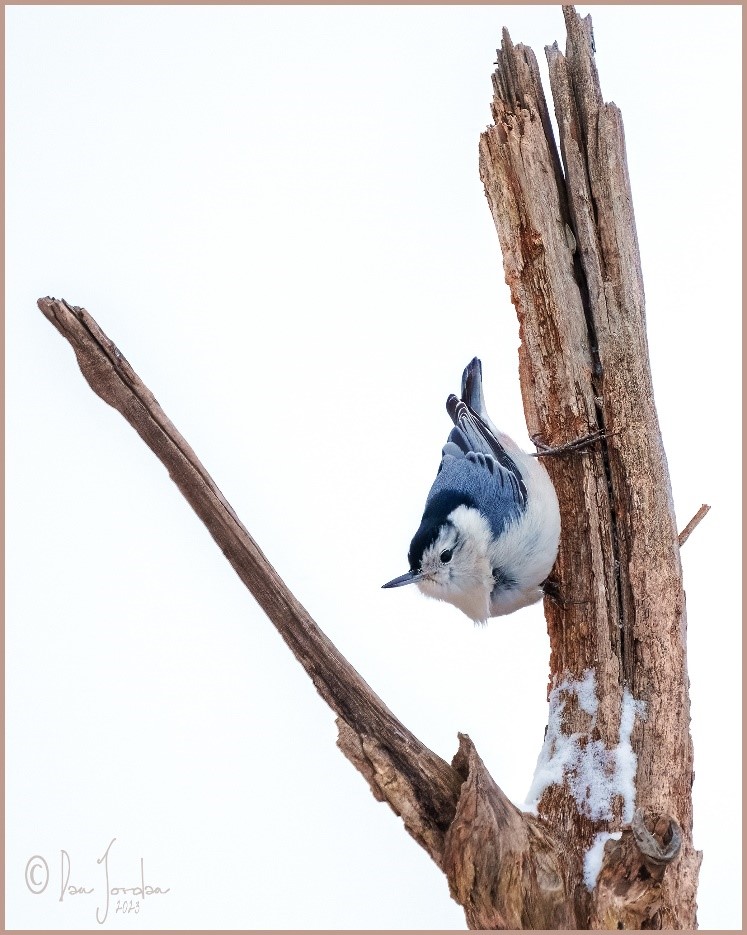
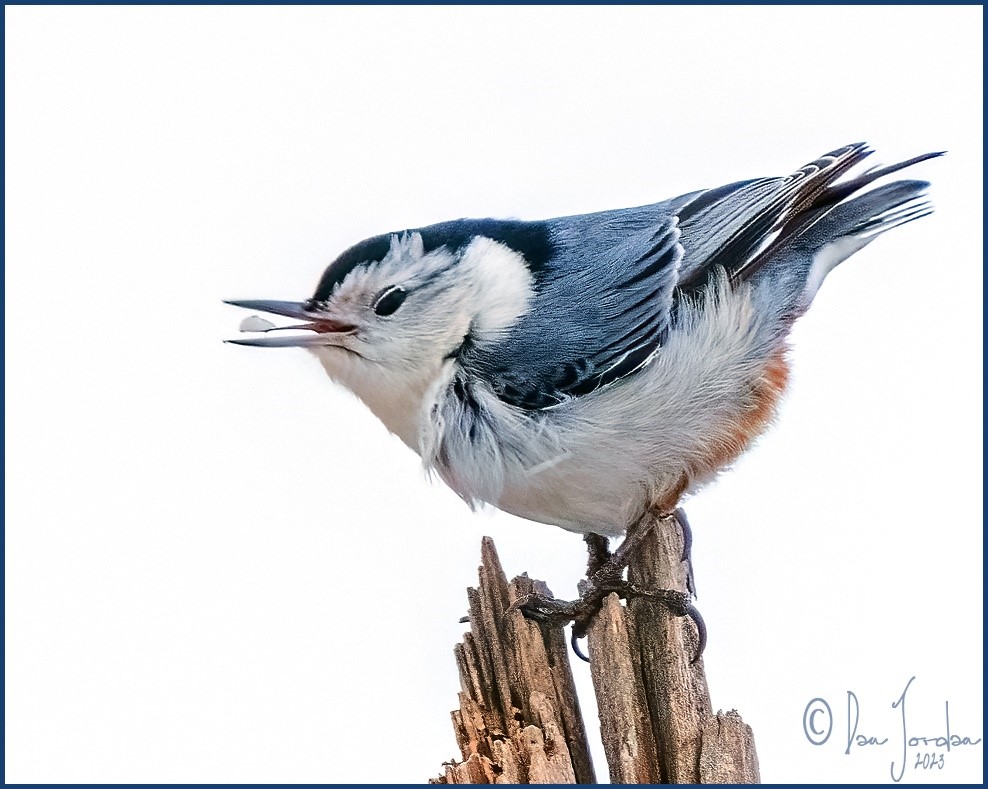
A nuthatch preparing to cache a sunflower seed.
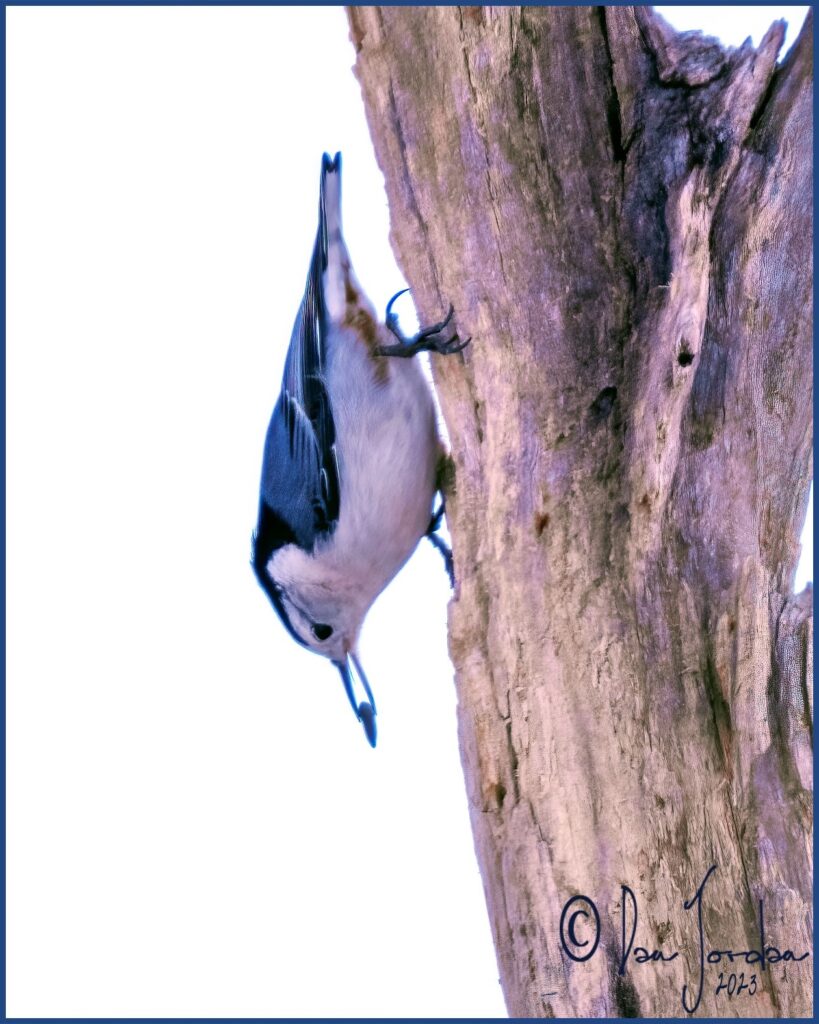
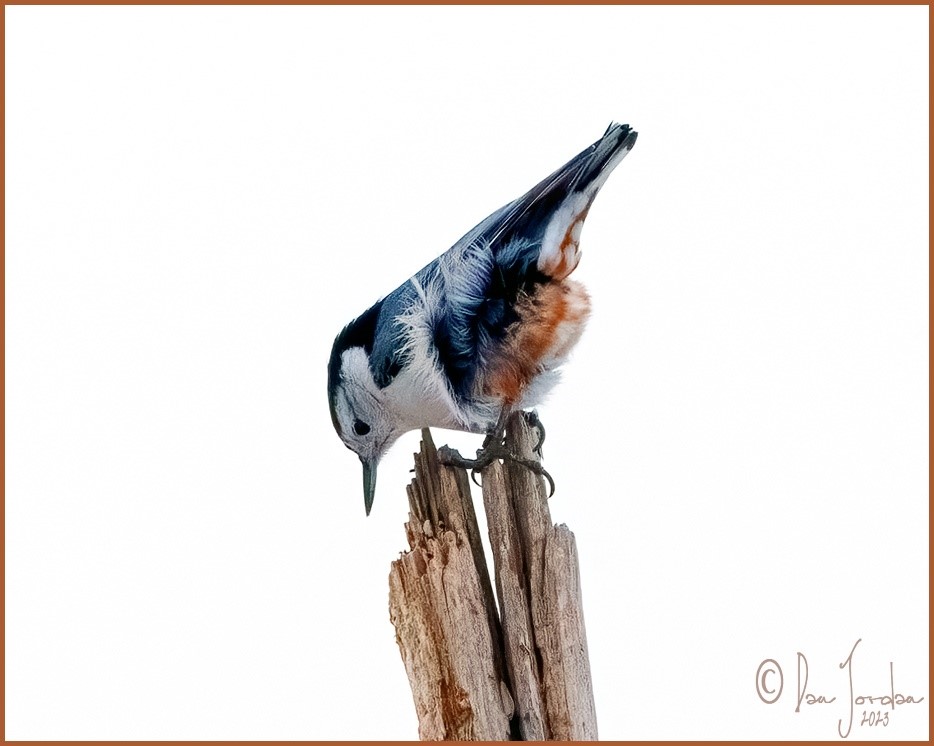
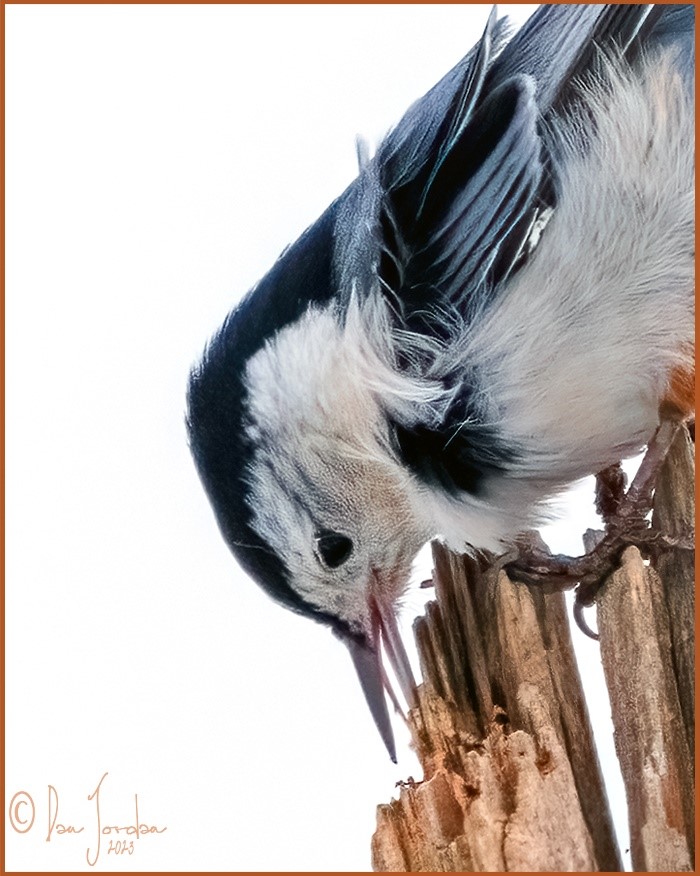
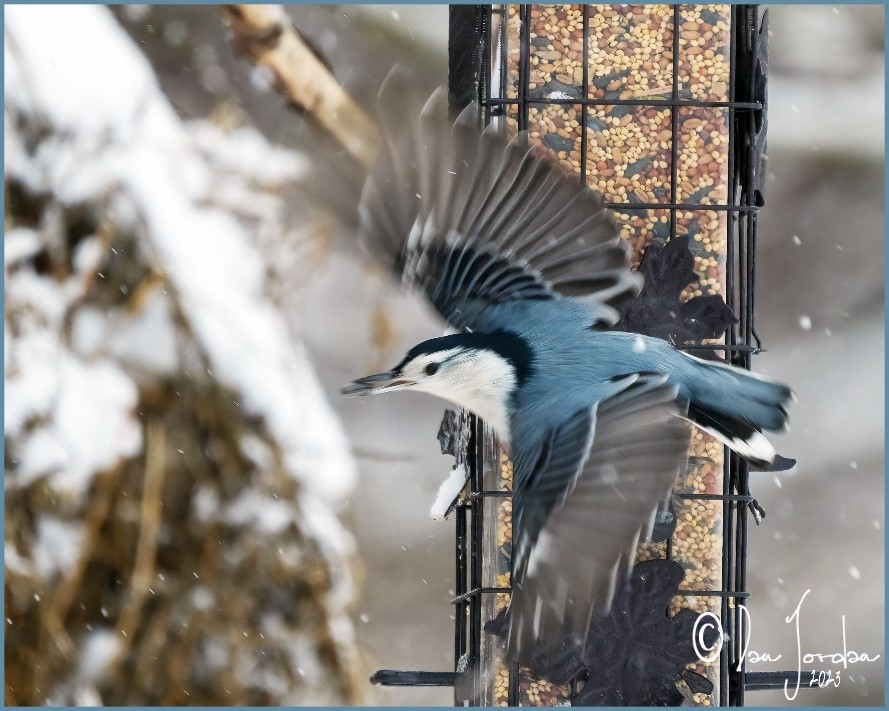
What’s this? A nuthatch right side up? Can it be?
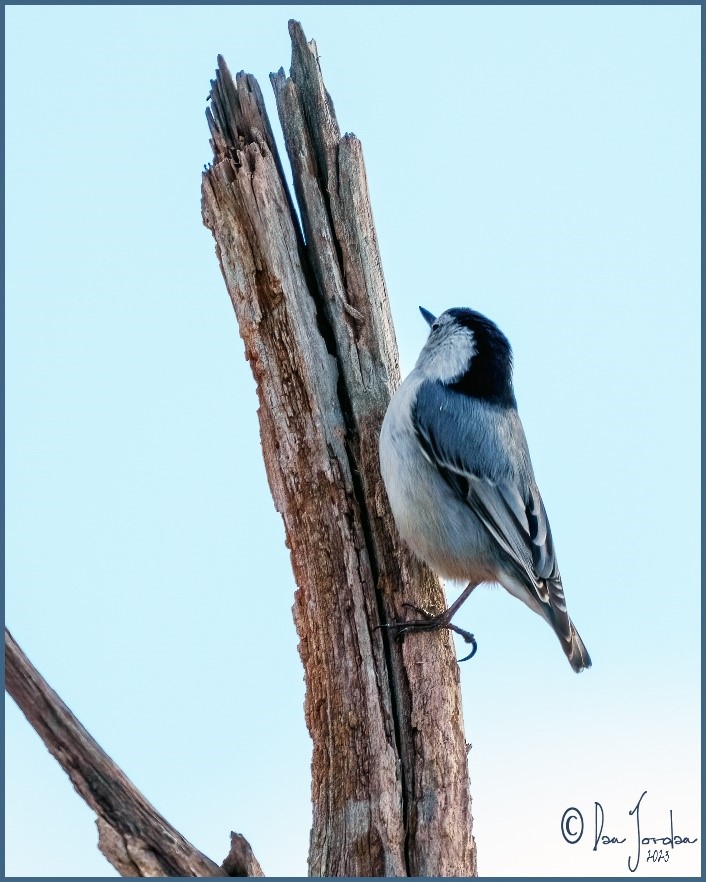
As I always say, keep your eyes open, especially around feeder or suet which has large seeds (sunflower seeds or peanuts) for these quirky behaving little birds. In the fall and winter, if you see a flock of chickadees, chances are there are some nuthatches among them.
When you see dead or decaying trees, look carefully for nuthatches caching or retrieving seeds or dead insects. Now and then, you might actually see one right side up!
DON’T MISS THE BIG “3-DAY” SUPERBOWL WEEKEND SALE STARTS FRIDAY 2/10


